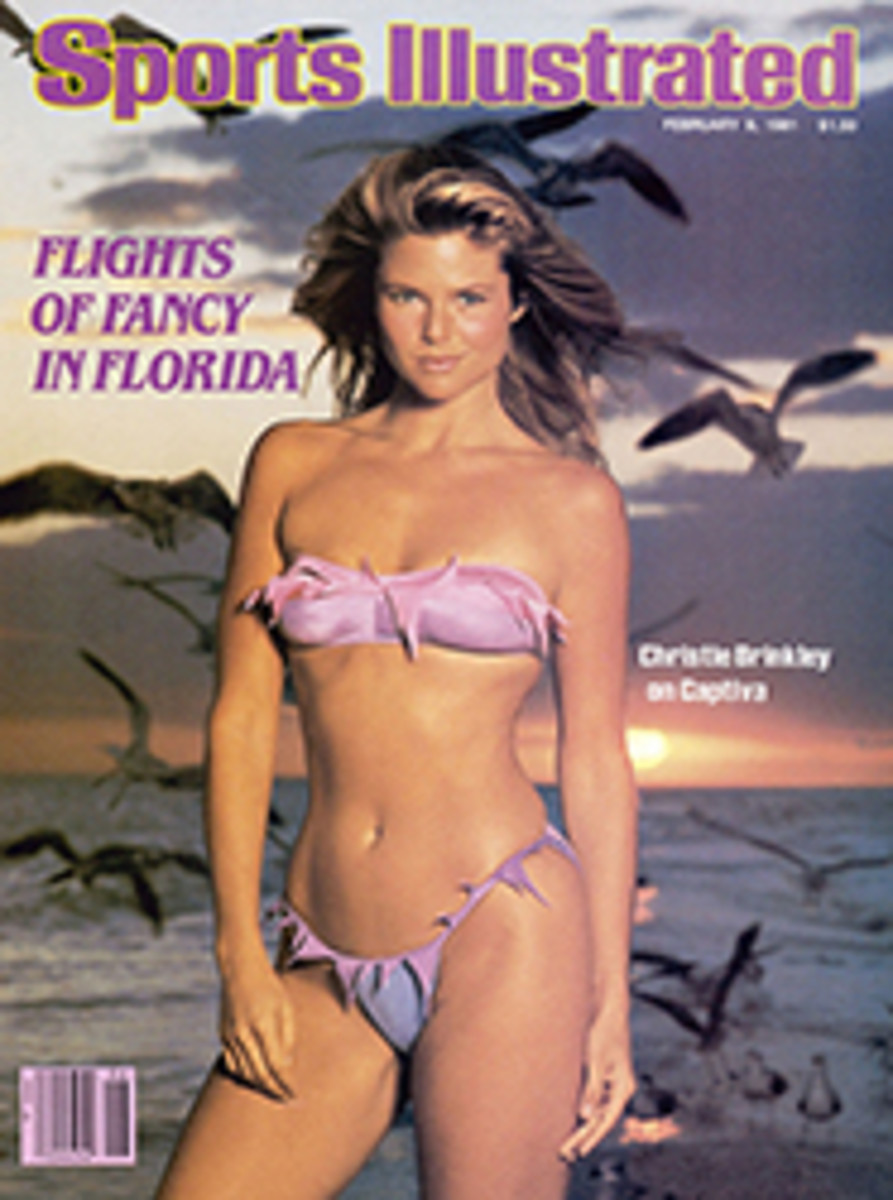
A THOROUGH AND FASCINATING STUDY OF THAT UBIQUITOUS FISH, THE BASS
Robert H. Boyle, a senior writer for SPORTS ILLUSTRATED, has been known to catch a bass or two between assignments, or, for that matter, between paragraphs. His latest book is titled Bass (W. W. Norton, $27.50), not, say, Golden Days Amongst the Lily Pads, and that alone suggests a certain directness of approach. Bass deals primarily with the life cycle and habits of the largemouth bass—"the most popular game fish in the United States." When Boyle writes of how long it takes a mature bass to excrete its food, he doesn't quote some musty old doctoral thesis; rather, he tells of an experiment in his living room: trapping a mouse and feeding it live to a 2½-pound largemouth in a 6-foot-long tank, then waiting for 14 hours. You know that's how long it takes.
Boyle's sparse prose is adorned with 75 superb color photographs by Elgin Ciampi, one of the world's great underwater photographers. They beautifully complement Boyle's accounts of the bass' life cycle. One, depicting a largemouth about to engulf an unsuspecting duckling, is particularly dramatic. Less so, but more of an accomplishment and more valuable as a teaching device, is a remarkable nine-page series showing a male and female bass in the act of spawning, and then their young, beginning life.
Other books on bass will tell you how to rig your Midget Frog Oreno Popping Bug, and where to find those Big Hawg Bucketmouth Bass that win contests. Boyle, more a scholar and watcher of fish than a competitor, would rather trace the spread of the bass (from the Midwest and South to all the states but Alaska) than tell how to decimate it. And his unique observations and analyses bring alive a world that can never be seen from the finest swivel-seated bass boat, even one with the ultimate in fish-finding radar.
Who but a man with bass swimming in his living room can write, as Boyle does, "When bass are on a feeding spree, they might stock up on...minnows.... I have looked into the mouth of a feeding bass and seen a half dozen minnows lying there"—and now a classic Boyle simile—"like so many people in bed." And who else could describe what happens when eight largemouth in a tank, one a 3½-pounder, go after a foot-long eel (thrown in, of course, by Boyle); how the big one inhales it, only to have it poke through a gill flap and wriggle free; how that eel does the same thing to all eight bass, until exhaustion slows it down, and zap!
For something to use on the lake this summer, one could color-code his lure collection, based on a Boyle experiment. Fascinated with studies showing that bass respond especially well to red baits, Boyle dyed 12 killifish a neutral red, left 12 undyed, and set them swimming in his tank with six bass. He did it many times, and the same thing always happened: the bass gobbled the killies, at a rate of two red to one natural. Boyle writes, "There was no question but that bass could see red killies better than naturals. On one occasion, the largest bass, a two-pounder, had to go at the last red killie in the tank. The killie raced up and down on top of the water four or five times before the bass finally nailed it in a corner with a mighty whoosh that sent water slopping over the sides."
More than two-thirds of Bass deals with the largemouth, though there are relatively sketchy chapters on the less well distributed smallmouth and the striped bass, and an entertaining one on antique lures, with 12 photos by Ciampi. An expanded study of this subject would make an interesting volume in its own right. In a chapter on fly-tying Boyle writes of his own Kat's Meow Streamer-Jig, "The simplest tie I know is the most effective.... If I had to be restricted to only one lure for the rest of my life, I would pick the Kat's Meow without hesitation.... Even when stuffed full, a bass will pounce upon [it] like a fat person who just can't resist that last little piece of fudge." The Kat's Meow is certainly simple to tie, and Boyle tells how while Ciampi's photographs show how.
Boyle's Grass Shrimp has been called, by Field & Stream magazine, "a work of art, or as perfect an imitation of a natural fish food as it is possible to make." Instructions are included for this one, too.
Bass ends with three recipes—for bass, of course. To make Chilled Bass you drop two-inch filets into salted boiling water for two minutes, then chill. That's it. Serve with your favorite sauce. Boyle likens it to shrimp and lobster. Bass Katya is slightly more complicated, and requires fresh tomatoes seasoned with salt, pepper, minced garlic, oregano and a dusting of bread crumbs. The bass filet sits atop the tomato slices, and all is broiled until just done. A slice of Swiss cheese on top and a brief return trip to the broiler completes the dish. If pickled bass appeals, there are directions for that, too.
There is nothing complicated or obscure about Boyle's fascinating book. A bass man will digest it in far less time than the 14 hours it takes for a largemouth to excrete a mouse. But it can be read—and admired—again and again no matter what the season. Boyle instructs and Ciampi delights. Bass might be worth its steep price without the pictures, but with them it is a shining thing, a volume to fuel the fancies of a long winter in the 49 states of bass country.

